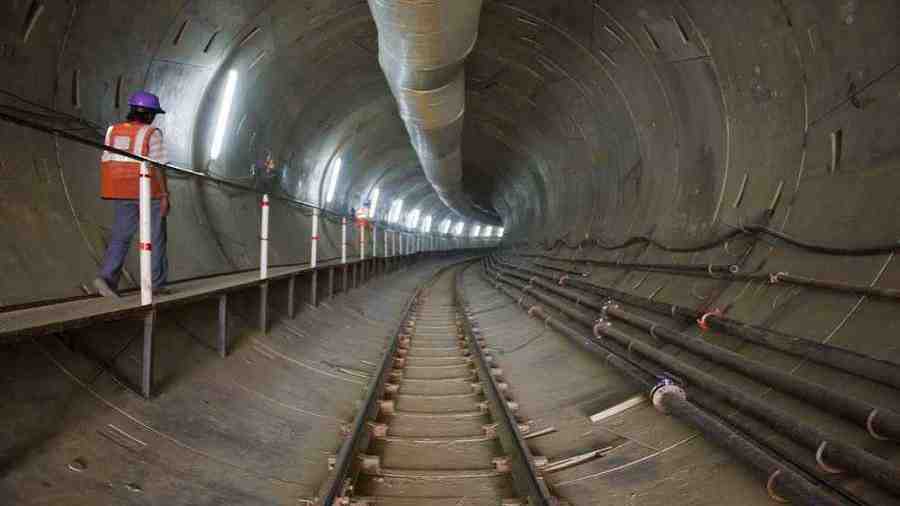The concrete that was used to plug the water leakage at the Bowbazar Metro site now stands in the way of any further progress of the project.
A big mass of concrete was used to close the holes through which underground water was leaking 22m below the surface, triggering soil subsidence that led to cracks in buildings in the vicinity on Wednesday.
Removing the huge lump of concrete has now emerged as a key challenge for the Kolkata Metro Rail Corporation (KMRC), the implementing agency of the East-West Metro project.
“The volume of the mass is over 220 cubic metres. The length is around 10m. Removing the mass will take at least two months,” said a KMRC official involved in the project.
Unless the mass is removed, the construction of another concrete structure to fill a yawning gap — in the form of a retrieval shaft between the two opposite tunnels from the Sealdah-end and Howrah-end — cannot be started, said engineers.
The shaft was 38 metres in length and construction of 29 metres had been completed when the latest accident occurred.
On Saturday, officials of the agency were busy assessing a road map to remove the lump of concrete.
Random attempts to remove the concrete can trigger a rerun of Wednesday’s accident, said KMRC engineers.
“We have to make holes in the concrete. Through the holes, we will have to grout the soil beneath to increase its density so that water leakage does not happen again. The concrete can be removed only after the grouting is done,” said N.C. Karmali, director (projects), KMRC.
The material used for grouting is a mixture of cement and sodium silicate, among other elements.
Excavation of soil to grout a “blind spot” under the Howrah-bound tunnel of East-West Metro led to leakage of underground water that in turn caused subsidence and cracks in at least nine buildings near Bowbazar on Wednesday.
The cracks have displaced over 160 people, the second time in less than three years.
The leakage was under control by Thursday afternoon and was completely stopped by 10pm the same day, according to the KMRC.
The area from where water started leaking on Wednesday was deep inside a retrieval shaft from where two tunnel boring machines were pulled out. The shaft is around 38m in length.
The gap is gradually being filled by building a reinforced concrete structure inside it.
Construction of 29m had been completed before Wednesday’s accident. To arrest the leakage of water, a large volume of concrete was used to plug the gaps.
The work to fill the gap will continue only after the mass of concrete is removed, said KMRC engineers.
Machines will be used to remove the concrete from the underground site but a “concrete plan of action” is imperative before the work starts, they said.
“The planning should take at least another week. We cannot afford a repeat of water leakage,” said a KMRC official.
The construction of the remaining nine metres was expected to take another two to three months.
The tentative deadline for the commissioning of the entire 16.5km project — which will connect Howrah Maidan and Salt Lake Sector V — was January 2023.
But the project has now been delayed for an uncertain period, according to officials.
